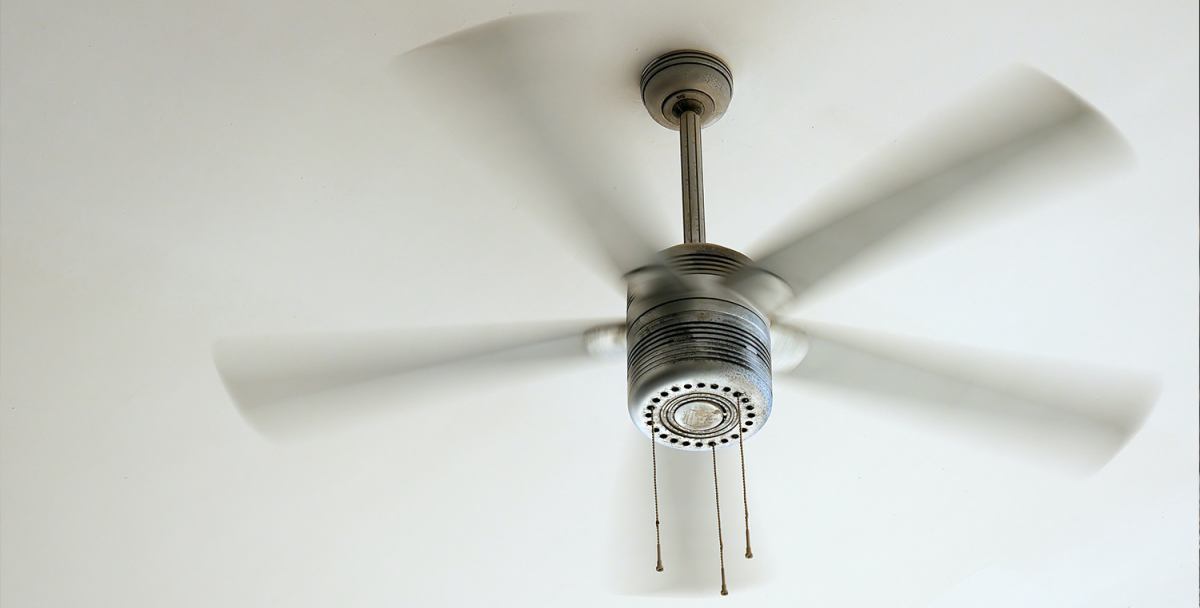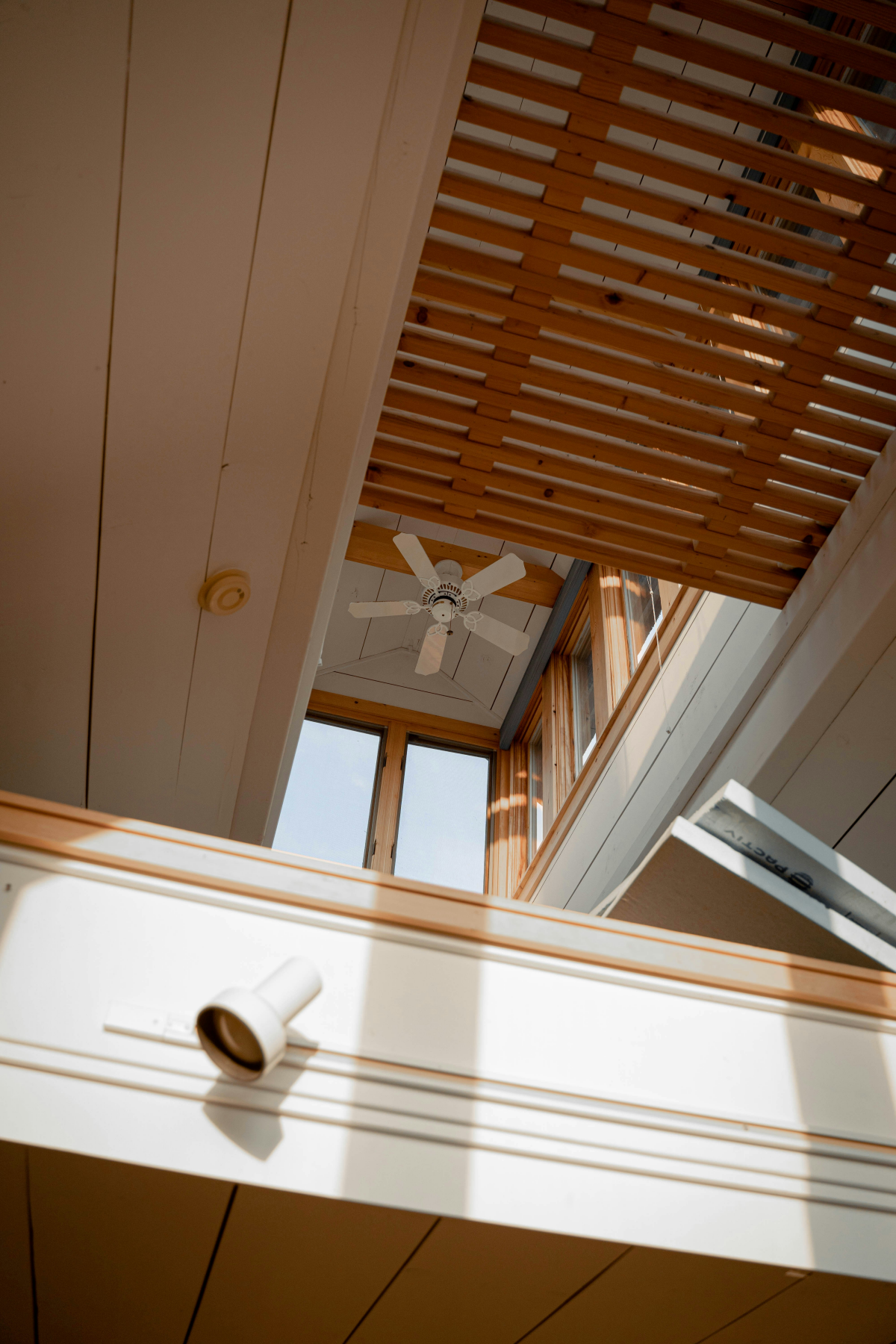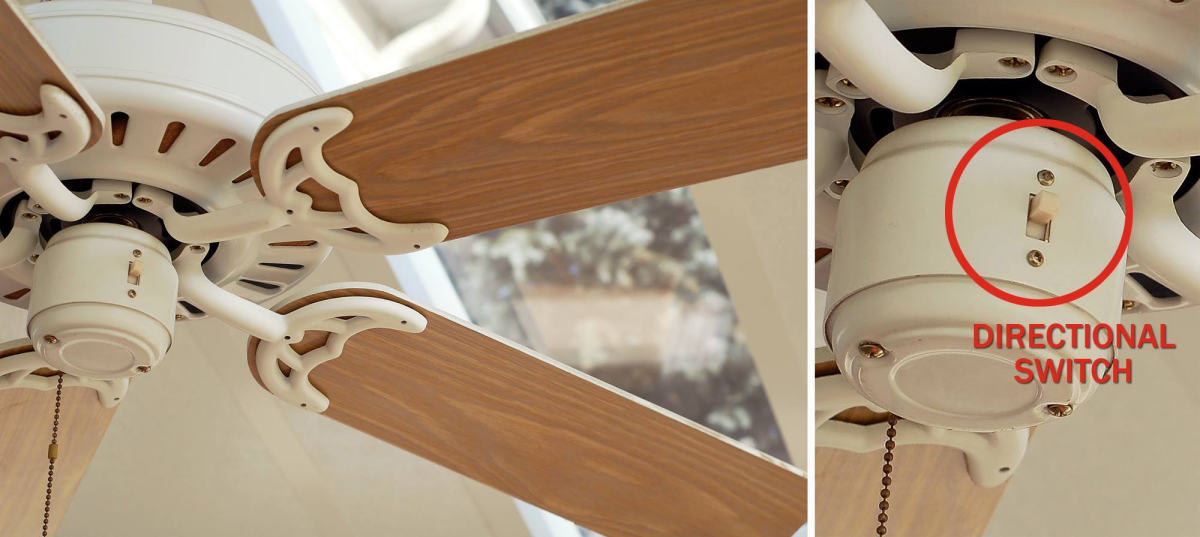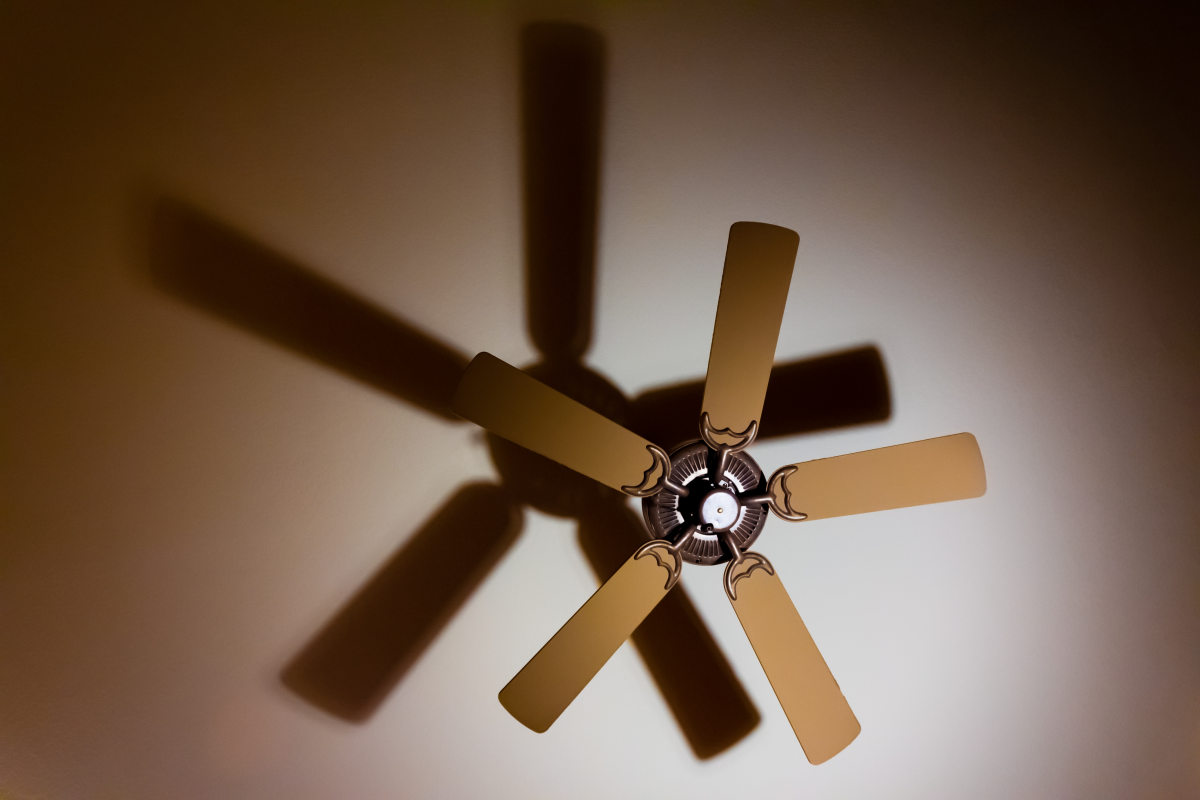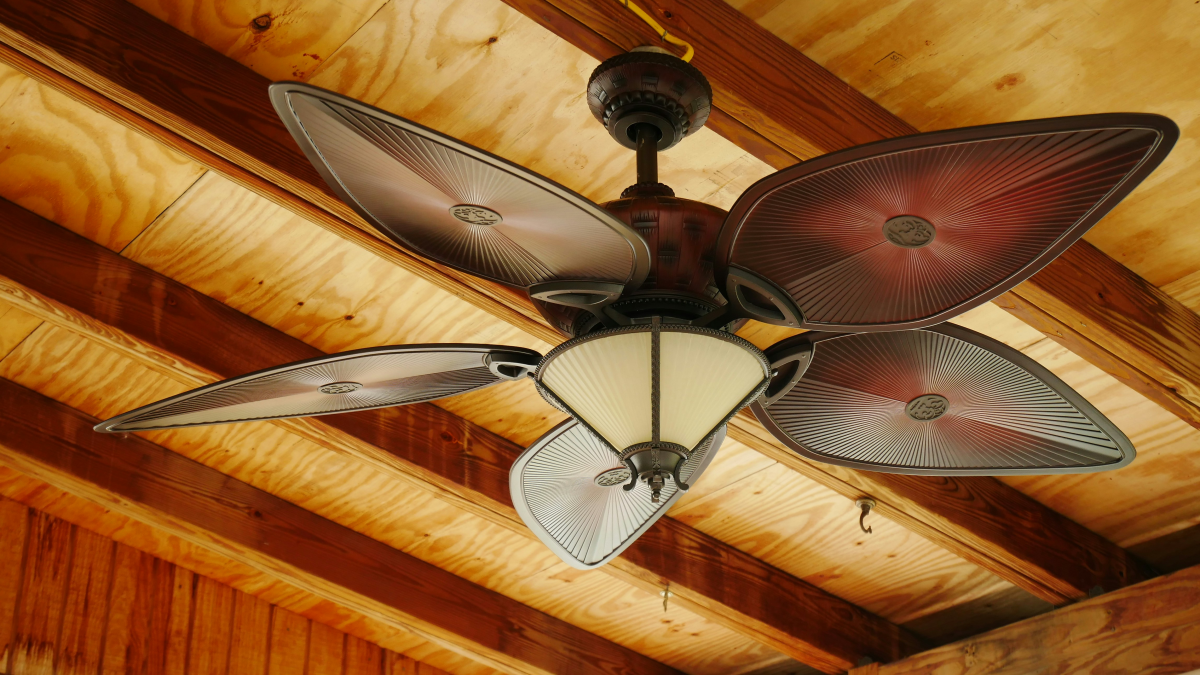Winterize Your Ceiling Fan: The Best Fan Direction For Winter
As winter unfurls its chilly embrace, we often find solace in the warmth of our homes, nestling into cozy nooks with hot beverages and soft blankets. In this pursuit of comfort, one household feature frequently goes unnoticed: the ceiling fan. Commonly relegated to a role in summer cooling, this versatile fixture can be a game-changer during the colder months. By simply adjusting the fan’s direction, you can transform it into an effective tool for distributing heat more evenly across your rooms. This often-overlooked function of ceiling fans can significantly enhance the warmth and energy efficiency of your home. This challenges the traditional notion that they are only beneficial in the warmer months. So, today we will share with all about the importance of your fan direction in winter.
Ceiling fans can be a game-changer during the colder months
In this article
How Do Ceiling Fans Work?
To leverage your ceiling fan’s potential in the winter, a basic understanding of its mechanics is essential. Ceiling fans are designed to rotate in two distinct directions: clockwise and counterclockwise. This directional change, typically achieved by flipping a switch on the fan’s body, alters the air circulation pattern within a room. In the summer months, a counterclockwise rotation is preferred as it generates a cooling breeze that helps in reducing room temperatures. However, during winter, setting the fan to a clockwise rotation is key. This mode causes an upward draft that pulls cooler air towards the ceiling, subsequently pushing down the warm air that rises and accumulates there. This mechanism not only facilitates a more efficient distribution of heat but also contributes to a more balanced and comfortable room temperature.
Ceiling fans are designed to rotate in two distinct directions
The Importance of Fan Direction in Winter
Utilizing your ceiling fan effectively in winter hinges on the direction of its rotation. By setting the fan to turn clockwise at a low speed, it gently draws cool air upwards, which then pushes the warmer air, naturally rising to the ceiling, down along the walls and back into the living space. This subtle movement of air, an updraft, is crucial in redistributing warmth without generating a noticeable breeze that could cool the area. Such an adjustment in your ceiling fan’s operation can lead to a more uniformly heated environment within your home. Not only does this enhance comfort by eliminating cold spots, but it also aids in maintaining a consistent temperature, contributing to overall energy efficiency and potentially lowering heating costs.
Utilizing your ceiling fan effectively in winter hinges on the direction of its rotation
Best Fan Direction for Winter
In the chilly embrace of winter, setting your ceiling fan to rotate clockwise is the optimal choice. This direction, often overlooked, is instrumental in achieving an even and comfortable distribution of heat within your home. When the fan turns clockwise at a low speed, it creates a gentle updraft. This motion circulates the warm air, which naturally rises to the ceiling, down along the walls and back into the room without generating a noticeable breeze. It’s essential to maintain a low speed to ensure that the fan does not create a wind chill effect, which could inadvertently make the room feel cooler. This subtle yet effective adjustment to your ceiling fan enhances the warmth and comfort of your living spaces, making the cold winter months more bearable.
Setting your ceiling fan to rotate clockwise is the optimal choice
How To Change Fan Direction
Altering the direction of your ceiling fan for winter use involves a subtle yet impactful change in how the fan operates, directly affecting the room’s comfort level. This process is centered around the fan’s directional switch, a small but crucial component that controls the rotation of the blades. Altering the direction for winter use is a straightforward process, and you can accomplish it in a few detailed steps:
This process is centered around the fan’s directional switch
Safety first
Before starting any adjustments on your ceiling fan, it’s crucial to prioritize safety. The first step is to turn off the fan using the wall switch or a remote control, ensuring there’s no power running to it. Once the fan is off, wait patiently until the blades have completely stopped. It’s important to remember that trying to change the direction of the fan while the blades are still in motion is not only hazardous but also increases the risk of injury. This precaution is a simple but essential measure to ensure your safety during the adjustment process.
The first step is to turn off the fan
Prepare for adjustments
Before making any adjustments to your ceiling fan, it’s important to set up a safe and stable work environment. Start by selecting a sturdy ladder or step stool that gives you comfortable and secure access to the fan. Place the ladder firmly on the ground, ensuring it’s stable and won’t wobble. Also, clear the area around the fan of any furniture or potential obstacles. This preparation not only ensures your safety but also provides a clear space to work, making the process of adjusting your fan more efficient and hassle-free.
Place the ladder firmly on the ground
Locate the direction switch
Once you’re safely set up on your ladder, the next step is to find the fan’s direction switch. This switch is typically located on the fan’s motor housing, the section where the fan connects to the ceiling. Carefully look for a small switch on the side or bottom of this housing. The direction switch is a crucial component, as it controls the rotation of the fan blades. Identifying this switch is key to successfully changing the direction of your ceiling fan to suit the winter season.
The direction switch is a crucial component
Change the direction
Changing the fan direction is a straightforward task once you’ve located the switch. Carefully flip the switch to alter the rotation of the fan blades. For most ceiling fan models, moving the switch to the right or flipping it upwards will set the blades to rotate in a clockwise direction, ideal for winter use. If your fan model varies from this standard, it’s advisable to consult the user manual for specific instructions on which direction the switch should be flipped. This simple adjustment will ensure your fan is set up correctly for the colder months.
Changing the fan direction is a straightforward task once you’ve located the switch
Test it out
Once the switch on your ceiling fan has been adjusted, the next step is to test the new setting to ensure it’s correct for winter use. Carefully descend from the ladder and turn the fan back on, starting at a low speed. As the fan begins to rotate, observe the direction of the blade movement. In the correct winter setting, the blades should be moving in a clockwise direction. Pay attention to the feel of the air movement in the room. You should notice a gentle upward draft, a sign that warm air is being pushed down from the ceiling into the living area. This subtle movement is key in achieving a warmer and more comfortable environment in your home during the colder months.
Pay attention to the feel of the air movement in the room
Final adjustments
After testing the fan and confirming its clockwise rotation, you might need to make some final adjustments. If the fan is not moving in the correct direction, safely climb back up to the motor housing to double-check the position of the direction switch. It’s not uncommon to need a second look to ensure the setting is correct. Once you are satisfied that the fan is set correctly and functioning as expected, you can then fine-tune the fan speed. Adjust the settings as necessary to find the perfect balance of air circulation for your specific room size and comfort level. The right speed will effectively circulate warm air without creating a draft, thus maintaining a cozy atmosphere in your room.
Adjust the settings as necessary
Additional Tips For Optimizing Your Fan in Winter
Maximizing the efficiency of your ceiling fan during winter requires more than just adjusting its direction. By implementing these strategies, you can enhance the comfort and warmth of your home during winter, all while optimizing energy use and ensuring your ceiling fan operates at its best. Here are some additional tips to enhance its performance:
You can enhance the comfort and warmth of your home during winter
Thermostat adjustments
Integrating the use of your ceiling fan with smart thermostat settings can significantly boost your home’s energy efficiency. Consider lowering your thermostat by a few degrees when the fan is in use. This small change can reduce your heating bills while maintaining a comfortable room temperature, as the fan aids in circulating warm air more effectively.
Consider lowering your thermostat
Regular fan maintenance
Routine upkeep plays a crucial role in the optimal functioning of your ceiling fan. Regularly dusting the fan blades not only improves air quality but also ensures efficient operation. Additionally, check that your fan is well-balanced. An unbalanced fan can lead to unnecessary noise and reduced performance. This maintenance helps in extending the lifespan of the fan and ensuring it operates at peak efficiency.
Routine upkeep plays a crucial role in the optimal functioning of your ceiling fan
Experiment with speed
The size and layout of your room can influence the ideal fan speed setting for winter. Experiment with various speed settings to find the perfect balance for your space. In larger rooms, a slightly higher speed may be necessary to ensure adequate air circulation, while in smaller spaces, a lower speed might suffice. The goal is to achieve a gentle movement of warm air without creating a draft.
Experiment with various speed settings
Now you know the right fan direction for winter! Ceiling fans are invaluable tools in creating a comfortable, warm, and energy-efficient home during winter. By understanding and adjusting the direction of your ceiling fan, you can enhance its utility far beyond its traditional summer use. So, as we embrace the winter season, let’s not forget to look up to this versatile fixture for a simple yet effective way to elevate our indoor comfort.
Now you know the right fan direction for winter
